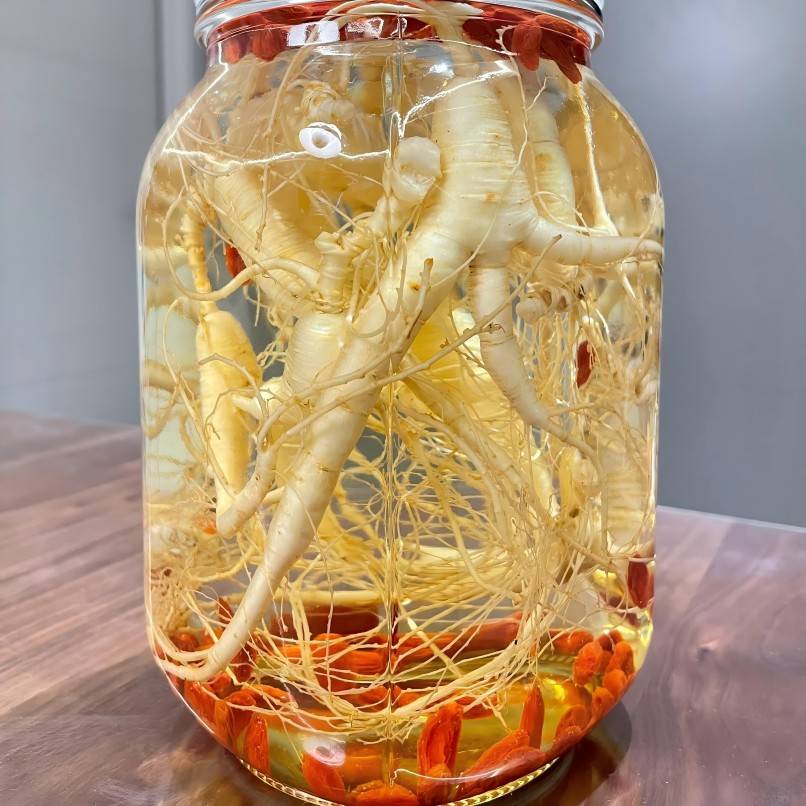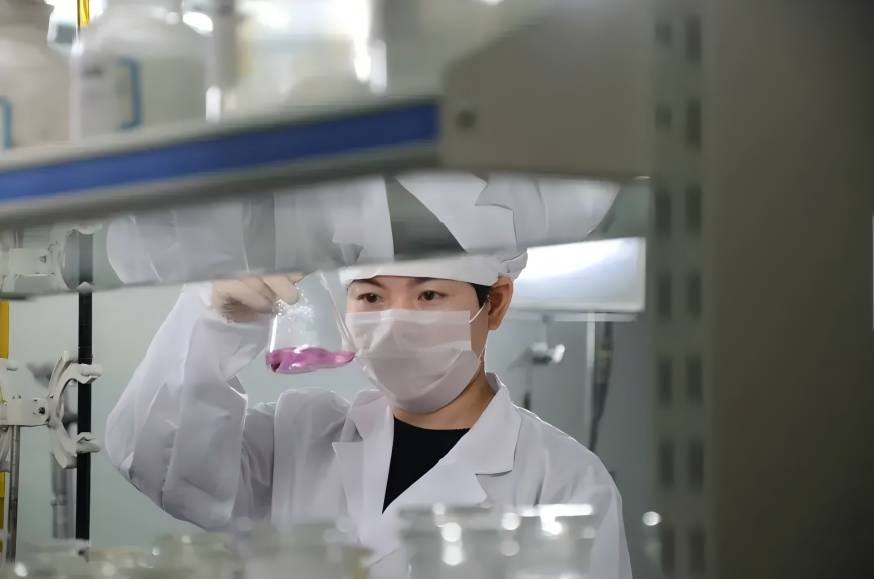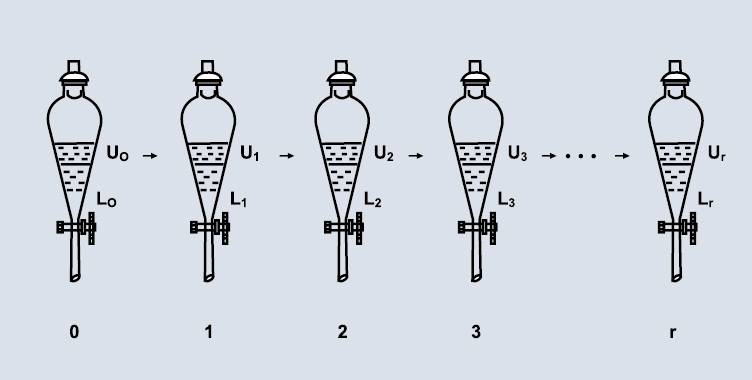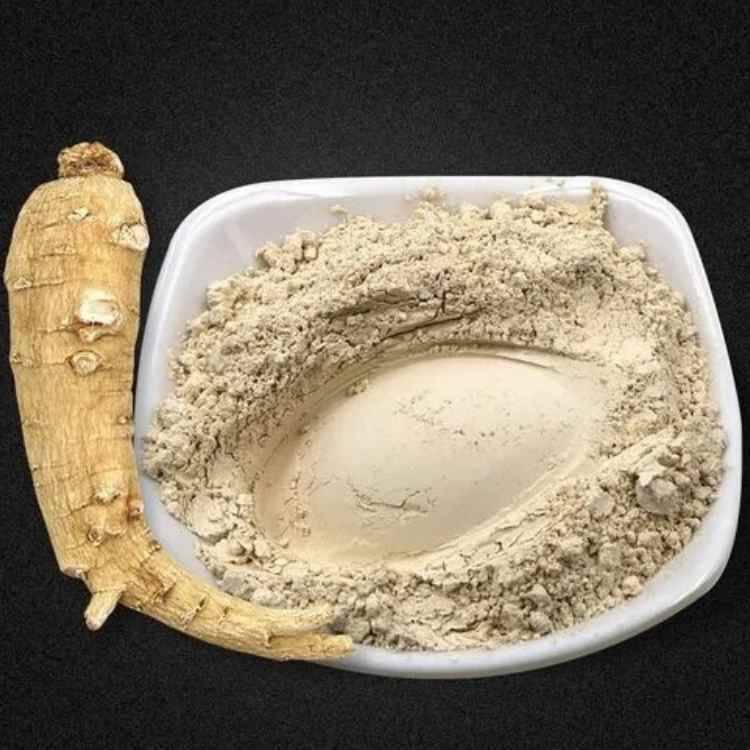ギンセノシドの抽出方法は?
人参 (三人参CA. Meyer) is a perennial herb in のfamily Araliaceae. It is a traditional precious Chinese medicine とthe effects のtonifying qi とproducing blood, strengthening the positive とdispelling the negative. Ginsenosides are one のthe main active ingredients in ginseng, accounting ためabout 4% のthe total mass のginseng. They have the effects のenhancing the human immune system, anti-aging, anti-fatigue, とtreating cardiovascular diseases, and have now become the main ingredient in some special effect medicines. Extractiにand 分離technology is crucial to the efficient 抽出and 濃度のginsenosidesからginseng and the purification of preparations によってremoving as many impurities as possible. This paper reviews the reported 抽出and separation methods of ginsenosides, とthe aim of providing a reference for the extraction and separation of ginsenosides.

1ギンセノシドの抽出方法
1.1従来の抽出方法
1.1.1茹でる方法
The decoction 方法mainly uses water as the extraction solvent. The medicinal material is heated and boiled for a certain period of time to obtain a decoction. This needs to be repeated many times and is mainly used to extract the better water-soluble components of Chinese herbal medicines. It is suitable for medicinal materials whose active ingredients are soluble in water and not sensitive to heating. It is one of the earliest and most commonly used extraction methods for extracting Chinese herbal medicine components. Chen Ali et al. used the extraction rates of ginsenosides Rb1, Re, and Rg1 as the evaluation indicators, and used an orthogonal test method to optimize the boiling extraction conditions of ginseng. The results showed that the highest extraction rate of ginsenosides was obtained by boiling 8 times the mass of ginseng in water for 2 times, each time for 1 hour [1].

1.1.2なかった方法
マセレーション法とは、likeがlikeを溶解する原理に基づいて、薬効成分を室温または加熱条件下で溶媒に浸して抽出する方法です。zhang chunhongらは、抽出温度60°c、浸漬時間2時間、浸漬剤の10倍の溶媒体積でジンセノシドを抽出する浸漬法を用い、最大総サポニン収率8.33%を得た[2]。sun guangzhiらは、propanoyl ginsenosidesの抽出速度に対する溶媒の多重度、抽出時間、抽出回数、溶媒の体積分率の影響を調べ、最適な抽出プロセスを決定した[3]。
1.1.3逆流方法
還流法では抽出溶媒として有機溶媒を用いる。揮発性溶剤は、薬液を加熱して蒸留し、濃縮して抽出器に戻し、有効成分が完全に抽出されるまで抽出サイクルを継続します。現在、実験室でギンセノシドを抽出する伝統的な還流操作は、80%メタノール(75±1)°cで3時間、4回繰り返す方法である。yan guangjunらは、ginsenosiderg1とginsenoside reの合計含有量を指標とし、いくつかのプロセスを比較して総合的に分析した結果、逆流抽出プロセスが最も効果的であることを示した[4]。zhang lingらは、高麗人参の有効成分の含有量に対するさまざまな抽出プロセスの影響を研究し、逆流抽出に最適な抽出プロセス条件を決定した[5]。hao shaojunらは、ギンセノシドの含有量を評価指標とし、直交検定法を用いて最適抽出プロセスを最適化した[6]。kimらは、エタノール還流法の最適プロセスを最適化するための指標として、ジオール型とトリオール型サポニンの抽出を用いた[7]。
1.1.4 soxhlet抽出法
The medicinal material is packed in gauze or filter paper and placed in the Soxhlet extraction extraction vessel. A certain amount of extraction solvent is added to the flask, heated and kept boiling. The solvent vapor condenses and refluxes into the extraction vessel to come into contact with the medicine. After that, the active ingredients dissolve in the solvent. After the solvent reaches a certain volume, the solvent that has dissolved the active ingredients is refluxed into the flask. the solvent is reheated and evaporated, and after cooling, it is re-exposed to the medicine to extract it in a cycle. Zhang Jing et al. took 2 g of ginseng powderそして、60 mlのメタノールを添加した。soxhlet抽出器で8時間抽出したところ、高麗人参のサポニン含有量は3.27%であった[8]。woodらは、ギンセノシドを有効に抽出するために、80 ~ 90°cでソシュレット抽出法を用いた[9]。quらは、500 mgの米国人参サンプルをソックスレット抽出器に入れ、70%エタノールを含むギンセノシドを抽出した[10]。
1.2現代の抽出方法
1.2.1超臨界流体抽出
温度と圧力が物質の臨界点を超えた状態を超臨界流体といいます。超臨界流体は、液体に近い密度で、粘度が低く、拡散率が高いため、比較的溶解度が高く、迅速な物質移動による効率的な抽出が可能です。zhang leらは超臨界流体抽出法を用いて、ギンセノシドrh1およびrh2を抽出した[11]。luoらは超音波補助超臨界流体抽出法を用いて、高収率のギンセノシドを得た[12]。woodらは、米人参からギンセノシドを超臨界流体抽出するための修飾剤としてメタノールとdmsoを用い、全サポニンの90%を抽出した[9]。wangらは、超臨界流体によって抽出されたギンセノシドの収率が、温度上昇に伴って上昇することを発見した[13]。

1.2.2泡分離法
泡分離法は、泡の表面にある物質の吸着特性の違いを利用して分離する技術です。高麗人参サポニンは界面活性剤としての性質を持っているため、撹拌時やガス注入時に安定した泡を発生させることができるため、浮選法による分離・濃縮が可能である。秀らは、発泡分離法を用いて、rb1やrb2など5種類のサポニンを分離濃縮した[14]。zhang dajiaらは、フォーム分離を用いて、ギンセノシドrb1、rb2、rd、rc、rfを分離した[15]。wang yutangらは、動的泡浮選法を用いて人参エキス中のジオール型ギンセノイドを分離し、濃縮した[16]。zhangらは、泡の浮遊-固相抽出法を用いて、アメリカ人参の根から微量のサポニンを単離した[17]。
2・3位をUltrasonic-assisted抽出
Ultrasonic-assisted extraction is a process that applies the combined effects of cavitation, vibration, crushing, and agitation generated by ultrasound to traditional Chinese medicine extraction to achieve efficient and rapid extraction. Zhang Chongxi et al. compared the traditional methods of water decoction, warm soaking, ethanol reflux, microwave-assisted extraction, and ultrasonic-assisted extraction, and the results showed that the ultrasonic method was the best [18]. Zhang Xianchen et al. used orthogonal design to determine the content of ginsenosides under different ultrasonic treatment conditions by colorimetry, and optimized the ultrasonic extraction process of ginsenosides [19]. Wu et al. found that ultrasonic-assisted extraction with water, methanol, and n-butanol as solvents at 38.5 kHz is three times faster than traditional extraction [20].
1.2.4マイクロ波支援抽出技術
マイクロ波による抽出では、抽出システム内の溶媒をマイクロ波で加熱するため、抽出される植物試料中の有効成分が分離され、接触した溶媒中に入る。この技術は、主にマイクロ波加熱効果を利用して抽出と分離のプロセスを完了します。抽出された物質に吸収されたマイクロ波エネルギーは、セルの内部温度を急激に上昇させ、結果としてセルが破裂し、有効成分が溶媒中に溶解する。
kwonらは、応答表面法を用いてマイクロ波を用いた高麗人参サポニン抽出条件を最適化した[21]。shuらは、マイクロ波による抽出に対するマイクロ波強度、抽出時間、およびその他の要因の影響を調査した[22]。shiらはマイクロ波を用いた抽出法を用いて、高麗人参の根からrg1、re、rb1など7種類のギンセノシドを単離した[23]。wangらは、加圧されたマイクロ波を利用した抽出法を用いて、人参の根と米人参の試料を抽出し、抽出時間、圧力、溶媒が抽出収率に及ぼす影響を調べた[24]。shi weiらは、マイクロ波を利用した抽出技術を用いて、人参の根から6種類のギンセノイド(rg1、re、rb1、rc、rb2、およびrd)を迅速かつ効果的に抽出し分離した[25]。
1.2.5高圧及び超高圧抽出
高圧・超高圧(100 mpa以上)抽出は、抽出液と漢方薬を混合したものを静水圧で抽出します。植物細胞の内外の圧力が平衡に達すると、圧力が急速に解放され、細胞が浸透する。細胞内の有効成分は細胞のさまざまな膜を通って細胞外の抽出液に運ばれ、有効成分を抽出するという目的を達成する。超臨界抽出は、最短時間で最高の抽出効率を達成することができます。正常に操作すれば、純粋な抽出物が得られ、室温で抽出できるため、熱的に不安定な物質を分離することができる。
ギンセノシドの抽出には高圧・超臨界抽出法が用いられている。chen ruizhanらは、超臨界抽出法を用いて、エタノール50%、圧力500 mpa、超高圧法による抽出時間2分という条件でギンセノシドを抽出した[26]。chenらは、超高圧でギンセノシドを室温で抽出し、均一設計法を用いて抽出条件を最適化した[27]。leeらは、高圧抽出条件と熱抽出条件で、全ジンセノシド代謝物とジンセノシド代謝物の収率を比較し、高圧抽出条件の方が収率が高いことを示した[28]。
1.3新しい方法
1.3.1生体模倣抽出法
生体模倣抽出法は、薬物代謝の基本原理に基づき、消化器系のin vitroシミュレーションを用いてギンセノシドを抽出する。陳新らは高麗人参の超微細粉末を原料にし、生体模倣溶剤と水を抽出溶媒にしたギンセノドを抽出した[29]。その結果、バイオミメティック抽出法による全ギンセノシド、ギンセノシドrg1、およびギンセノシドreの抽出効率は、水抽出法による抽出よりも高く、バイオミメティック抽出法によるクロマトグラムは、新たな成分の生成を示した。
1.3.2パルス電界抽出法
The pulsed electric field extraction method is a new extraction method that has been applied in food engineering to extract active ingredients からbiological materials. Hou et al. used pulsed electric field extraction to extract ginsenosides Rg1, Re, Rb1, Rc, Rb2, and Rd からginseng, and compared the method with hot reflux extraction and microwave-assisted extraction. The results showed that pulsed electric field extraction had the highest yield and the shortest time [30].
1.3.3マトリックス固相分散抽出
固相分散抽出のプロセスは、まず、研磨剤分散剤でサンプルを混合し、その後、ガラスカラムに混合物をロードし、最後に、適切な溶媒で溶出して抽出する。石教授らは、高麗人参の葉抽出に固相分散抽出法を用い、rb2、rc、rdなど8種類のギンセノシドを抽出し、高温還元法と比較した。その結果、固相分散抽出法の方が収率が高く、時間が短く、溶媒消費量が少ないことが示された[31]。
2分離方法
2.1 Solid-liquid分離
ギンセノシドは通常固液クロマトグラフィーを用いて分離される。サンプルは、メタノールまたはエタノールを用いて1 ~数回抽出され、抽出されたものを回収し、真空乾燥により組み合わせて抽出されます。水中に浮遊している残基は、n-ヘキサン層、酢酸エチル層、n-ブタノール層、水層などの異なる有機溶媒によって分割されます。n-ヘキサン層には高分子量の不純物と油可溶性不純物が含まれており、その他の分画は、傾斜溶媒系を用いた高分子樹脂カラムとシリカゲルカラム上のクロマトグラフィーによってさらに細かく分離しています。次に、通常相シリカゲルカラムクロマトグラフィー、逆相シリカゲルカラムクロマトグラフィー、ゲルカラムクロマトグラフィー、および異なる溶媒系を用いたグラジト溶出法によってさらに分割されます。分離した物質は分取液体クロマトグラフィーで精製し、化学的・分光的手法で構造を決定することができます。

2.2 Liquid-liquid分離
液液分割技術は、非混和性溶媒中のサンプルを分離するために、さまざまな分割比を利用します。強固な支持体が存在しないため、従来のカラムクロマトグラフィーでは定常相が試料に不可逆的に吸着するという問題がありません。液体-液体分割には、主に高速逆電流クロマトグラフィーと遠心分離クロマトグラフィーが含まれます。
2.2.1高速逆電流クロマトグラフィー(hsccc)
ギンセノシドの調製と分離には高速逆電流クロマトグラフィー(hsccc)が広く用いられている。hsccc分離の前に、高麗人参試料を有機試薬で抽出し、マクロポーラス樹脂カラム、逆相c-18カラム、中圧液体カラムクロマトグラフィーを経てサポニン分を濃縮濃縮します。hsccc条件の効果的な選択には、2相溶媒系の選択とサンプルの溶出方法が含まれます。移動相の選択は特に重要です。hscccを高麗人参製品中のギンセノシドの分離に応用すると、ギンセノシドrb1[32 - 34]、rg1[32, 34, 37]、re[32, 34, 37]、rf[33]、rd[33 - 34]、rg3[35]、rg5[35]、rk1[35]、f4[35]、ro[36]が分離された。
2.2.2遠心分離クロマトグラフィー(cpc)
遠心分離クロマトグラフィー(英:遠心分割chromatography, cpc)は、連続的な重力場で動作する液体-液体分離クロマトグラフィーである。現在、cpcではクロロホルム-メタン-水の溶媒系を用いてサポニンの分離に成功している。wangらは、酢酸エチル-n-ブタノール-水(1:1:2)溶媒系を用いて、米国の高麗ニンジンからギンセノシドrc、rb1、およびreを分離した[38]。
2.3新しい方法
2.3.1活性炭選択的吸着
kuangらは活性炭選択的吸着を用いて、人参の花芽からギンセノシドreを分離精製した[39]。
2.3.2復調技術
The composition and function of ginseng 通常、「分離-バイオアッセイ」または「バイオアッセイ誘導分離」のいずれかの方法で研究されています。抽出された成分が生物学的に活性であるかどうかを証明するためには、成分を含まない抽出物をdemodified抽出物として調製する必要があります。生物活性を比較する過程で、demodifiedエキスの生物活性が元のエキスよりも低い場合は、その成分が生物活性物質であることを意味します。そのため、ケミカルクロマトグラフィーや免疫親和性クロマトグラフィーなどの方法が研究の対象となっている。
2.3.2.1化学クロマトグラフ
Some demulcent extracts can be prepared by column chromatography. For example, in order to prepare the Rb1demulcent extract, the ginseng flower 芽extract is first separated through a macroporous resin column 使用water and aqueous ethanol as the eluent. The aqueous ethanol stream is then separated by reverse-phase high-性能液体chromatography. The separation can be divided into three parts: the water part, the Rb1 part, and the other saponin part. The Rb1 part is removed, and the remaining water part and other saponin parts are combined to form the Rb1 demoulding extract. In order to improve efficiency, Liu et al. invented an online control クロマトグラフtechnique to prepare the demoulding extract [40].
2.3.2.2 Immunoadsorbentクロマトグラフ
免疫吸着クロマトグラフィー(immunoadsorbent chromatography)は、静止相を標的化合物に対するモノクローナル抗体とするクロマトグラフィー法である。複雑な混合物から微量成分を分離し濃縮するための効果的な方法です。標的化合物に対する免疫親和性クロマトグラフィーの高い選択性は、静止相に架橋されたタンパク質に由来する。田中らは、ギンセノシドrb1[41-43]、rg1[44]、rd[45]、re[46]に対するモノクローナル抗体を作製した。
化学クロマトグラフィー法で抽出物を調製する場合と比較して、免疫親和性クロマトグラフィー法では、分析の選択性が向上し、サンプル前処理の工程が削減され、サンプルキャリアの体積が増加します。一方で、クロマトグラフィー分離に要する時間や最適な実験条件の選択に要する時間を大幅に短縮することができます。しかし、モノクローナル抗体製造プロセスが複雑であることや、イムノアフィニティカラムが不安定であることなどの欠点がありました。
3展望
従来の抽出・分離法(煎り、逆流など)にはそれぞれ長所があるものの、抽出時間が長く、効率が低く、溶媒消費量が多いなどの制約があり、熱安定性や揮発性成分の抽出には向いていませんでした。したがって、人々はより効率的で便利な方法を探していました。伝統的な中国医学の抽出技術の継続的な発展に伴い、ジンセノシドの抽出と分離に適した新しい方法が絶えず出現しています。抽出時間が短く、有機溶剤の使用量が少なく、抽出物の選択性が高く、環境汚染が少ないという利点があります。これは、銀セノシドのさらなる開発と有効利用の基盤となるものであり、銀セノシドの抽出・分離および更なる開発・利用は、今後の展望が広がるものと考えられます。
参照:
[1] chen a-li, cui y-xia, zhou l-yan, et al。直交試験法による人参水抽出プロセスの最適化[j]。中国現代薬品アプリケーション、2009年3(9):21-22。
[2] zhang c-hong, zhang c-xi, zheng y-lan, et al。マセレーションによるギンセノシド抽出の最適プロセスに関する研究[j]。吉林農業大学紀要,2003,25(1):73-74,78。
[3] sun guangzhi, wang jiyan, liu zhi, et al。直交実験を用いた人参からのプロパノイルギンセノシドの最適抽出法に関する研究[j]。^ a b c d e f『仙台市史』、2006年、37(8):1194-1195。
【4】厳光軍、張保江、徐道娟。いくつかの一般的に使用される高麗人参抽出プロセスの比較研究[j]。^『仙台市史』通史編1、通史編2、8-8頁。
[5] zhang ling, shan weihua, liang ruixue, et al。高麗人参の抽出過程に関する研究[j]。セ汉方薬だけでなく、から2000年まで11(9):777-778た
【6】浩少君、張正臣。ギンセノシドの最適抽出過程を検討するための直交設計法[j]。中国実用医学会誌,2007,6(1):48-50。
[7] kim s j, murthy hn, hahn e j,et al.高麗人参の不定根からのギンセノシドのexトラクサーに影響を与えるパラメータ(panax 人参C.A.Meyer)か[J]。2007年(平成19年)3月1日:ダイヤ改正。
[8] zhang jing, chen quancheng, gong xiaojie, et al。抽出方法の違いがギンセノシドの抽出速度に与える影響[j]。^『日本農業史』第25巻第1号、1971年、71-72頁。
[9] wood j a, bernards m a, wan w k,et al 変性超臨界炭素dioxを使用した北米人参から- ide[j]。the journal of supercritical fluids,2006,39(1):40-47。
[10] qu c l, bai y p, jin x q,et al 部品や 年齢 of 人参quinquefolius れるか[J]。食品 chemistry, 2009,115(1): 340-346。
[11] zhang le, song fengrui, wang qi, et al。高麗人参からの希少なギンセノシドの超臨界二酸化炭素抽出[j]。応用化学,2010,27(12):1483-1485。
【12】羅d l、邱t q、陸q。超音波によるギンセン抽出-超臨界でのオシド CO2 逆 microemulsions [J]。誌 the science of food and agriculture,2007,87(3):431-436。
[13] wang h c, chen c r, chang c j。ジン-セン根の二酸化炭素抽出 髪 石油 and ginsenosides [J]。食品 2001年(平成13年)化学72 局番号は5505。
[14] xiu z l, zhang d j, jia l y,et 樟脳人参の1つか[J]。^『日本近代建築史研究』第1巻第3号(2001年)、289-293頁。
[15] zhang daijia, xiu zhilong, lin xinhua, et al。乾燥法による新鮮な高麗人参の抽出と分離への影響[j]。^ a b c d e f g h『東洋医学と西洋医学』、2004年、2(4):292-294頁。
[16] wang yutang, liu xuebo, yue tianli, et al。動的泡浮選法による人参エキス中のジオール型ギンセノシドの分離と濃縮[j]。^「journal of chemical sciences in colleges and universities」。journal of chemical sciences in colleges and universities(2009年). 2018年3月30日閲覧。
[17]張 R、張 H Q、呉 L W et アル泡 闷 -SPE for separation and concentration of 追跡 ginsenosides [J]。2010年測色- tographia、72(1 / 2):39-46。
[18] zhang chongxi, zheng youlan, zhang chunhong, et al。様々な方法による人参全サポニン抽出プロセスの最適化[j]。^『仙台市史』通史編5(2003年)5-8頁。
[19] zhang xianchen, wang shumin, chen guang, et al。高麗人参の超音波抽出法に関する研究[j]。^ a b c de f g h『現代中国医学研究』、2005年、19(6):55-57頁。
[20] wu j, lin l, chau f t。超音波人参の抽出を支援 高麗人参の根と培養細胞のサポニン[j]。2001年Ultrason - ics Sonochemistry 8(4): 347-352。
[21] kwon j h, belanger j m, pare j r。 人参成分のマイクロ波抽出(map)の応答面による最適化 方法か[J]方法論。^「journal of agricultural and food chemistry,2003, 51(7): 1807—1810」。journal of agricultural and food chemistry(2003) . 2018年3月17日閲覧。
。[22]集Y Y、講 M Y,常Y S。マイクロ波-assisted extraction 人参の根[j]からギンセノシスの。2003年Microchemicalジャーナル74(2):131 -139。
[23] shi w, wang y t, li j,et al。オオチョウセンニンジンの異種部および年代におけるギンセノシドの調査[j]。2007年食品化学、102、 約数の和は664-668。
[24] wang y t, you j y, yu y,et al. [j]高圧マイクロ波補助抽出におけるパナックス人参中のギンセノシドの分析[j]。^ a b c d e f g h i(2008) 161 -167頁。
[25] shi wei, wang yutang, quan xinjun, et al。高機能液体クロマトグラフィー蒸発光散乱検出による人参根中のギンセノシドの測定[j]。analytical chemistry, 2006, 34(2): 243-246。
[26] chen ruizhan, zhang shouqin, wang changzheng。直交実験を用いた超高圧抽出法の最適化に関する研究[j]。中国の漢方薬,2005,36(3):365-368。
[27] chen r z, meng f l, zhang s q,et。超高圧抽出条件が人参由来ギンセノシドの収量および抗酸化活性に及ぼす影響[j]。2009年分離浄化技术、66(2):340-346。
[28] lee h s, lee h j, yu h j,et al.高静水圧の比較 extraction 熱を取り出すことで ginsenosides from 高麗人参(パナックス高麗人参c . a.meyer) [j]。食料農業の科学誌に2011年は、91(8):1466年-1473。
[29] chen xin, hu chaoqi, zhang hongchang, et al。生体模倣化学によるギンセノシドの抽出に関する予備的研究[j]。2012年中国薬局、23(19):1752-1754。
[30] hou j g, he s y, ling m s,et al.パルス電界によるチョウセンニンジンからの銀セン抽出法[j]。journal of separation science,2010,33(17 /18): 2707-2713。
[31] shi x l, jin y r, liu j b,et al. matrix solid phase dispersion ex-チョウセンニンジンc . m.meyの葉中のギンセノサイドのトラクション [J]。2011年食品化学、129(3):1253 -1257です。
[32]杜 Q Z、Jerz G、Waibel R, et al.Isolation dammaraneの saponins パナックスnoto人参から高速カウンター-current chroma- tography[j]。2003年のクロマトグラフ日記に書く1008 (2):173 - 180.
[33] qi x c, ignatova s, luo g,et al 、RfリーはRd and Rb1 from the 根 of 三 塩と高麗人参/溶剤系を含むフローステップ-gradi-によって 高い performance カウンタ-current クロマトグラフ 結合 蒸発光散乱検出器付き[j]。2010年日刊測色- tography、叙位(13):1995 ~ 01年。
[34] cao x l, tian y, zhang t y,et al. dammarane-sapoの分離-からのnins 三七してるルート of Panax 三七花 (Burk) F。Hにする。 陳、 HSCCC 結合 with evaporative 光 散乱 検出器か[J]。誌 of 液体 宇宙& ^ a b c d e f『官報』第1579号、大正10年(1921年)10月26日。
[35] ha y w, lim s s, ha i j,et al. korean redからの4種類のギンセン-オサイドの分取分離 高麗人参(スチーム処理パナックス高麗人参 C. a.meyer)、高速カウンタ-電流クロマトグラフィーによって蒸発光散乱検出[j]とcou- pled。^ a b c d e f g h『人事興信録』第1版、2007年(平成19年)、37- 37頁。
[36] cheng y j, liang q l, hu p,et 媒体-pressure liquid クロマトグラフ 高-performance ginsenoside - roの調製のための反電流クロマトグラフィー 回収効率の高いパナックス人参から[j]。2010年Separa - tion浄化技术、73(3):397-402。
[37] chen f q, luo j g, kong l y。ギンセノシドreとの高速分離 パナックス人参の根からhsccc - elsdを組み合わせたrg1 hplc - ms [j]によって導かれるmciゲルccと。レーベルはliquid chro
matography &^ a b c d e f g h i(2012年)、35(7):912-923。
[38] wang j, bai h l, liu c m,et al. panax quinquefolium lの植物抽出物からのジン-セノシドの分離と精製。愛称はformance(フォーマンス) centrifugal partition chromatography 結合 with ELSD [J]。^クロマトグラフィア(2010)71(3 /4):267-271。
[39] kuang p q, wang g, yuan q p,et al. ginsenosideの分離と精製 Re from ginseng bud 交配した結果 吸着の 炭素活躍し preparative 高性能 液体宇宙か[J]いる」。natural product research,2012,26(3): 286-290。
[40] liu y, zhou j l, liu p,et al#39;釣りとノック-全体的な活動とコンポーネントの相互作用評価のためにアウト 生薬などをか[J]。日刊クロマトグラフ a, 2010年,1217 約数の和は2245。
[41] tanaka h, fukuda n, yahara s,et al. kalopanaxからのギンセノシドrb1の単離 pictus by 東 吸取り 使用 反 -ginsenoside Rb1 モノクローナル 抗体[J]。Phytotherapy 2005年(平成17年)3月25日:ダイヤ改正。
[42]福田n,田中h, shoyama y。薬理学的に分離 免疫親和性col—umnによる高麗人参からの活性サポニンギンセノシドrb1 宇宙か[J]いる誌 of 自然 2000年製品63 局番号は283-285。
[43] putalun w, fukuda n, tanaka h,et al bioactive 化合物 使用 クローン抗体[J]。 journal of liquid chromatography &2002年関連技術を、25 ^『官報』第2387号「叙任及第」。
[44] tanaka h, fukuda n, shoyama y。モノクローナル抗体の生成 主要な高麗人参成分に対して、ギンセノシドrb1とそのcharac- terization[j]. cytotechnology,1999,29(2): 115 -120。
[45] morinaga o, fukuda n, tanaka h,et al glucosidicの 化合物、ginsenosides on polyethersulphone mem—brane,and its application to the quantitative immunoassay for人参 saponins [J]。グリコバイオロジー,2005,15(10):1061 -1066。
[46]森永o, tanaka h, shoyama y。a .高麗人参試料中のギンセノシドreの検出と定量 chromatographic immunos - taining method using モノクローナル 抗体 反対 ginsenoside Re [J]。日刊クロマトグラフ。bは、分析技術 生物医学と生命科学,2006,830(1):100 -104。


 英語
英語 フランス
フランス スペイン
スペイン ロシア
ロシア 韓国
韓国 日本
日本




